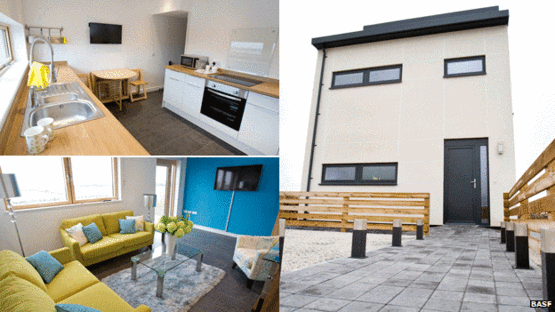Monday, 29/12/2025 | 23:28 GMT+7
The house, which was constructed near the English town of Bridgened, came as a result of the efforts of designers from Cardiff University. They were challenged by the statement by the chancellor George Osborne, who claimed that zero carbon houses are too expensive to build, or in his precise words- “impossible”.
The building construction came at £1,000 (~$1500) per sq m and it is nicely within the cost limit for social housing construction (£800 ($1200) to £1,000 ($1500) per sq m), and it took a total of 16 weeks.
The main energy source is the sun, which powers the air heating systems, ventilation, hot water system, and supplies electricity to the electrical power system. The energy supply is ensured by the glazed solar PV panels, which also comprise the the south-facing roof. In this way, the cost of fitting the panels onto a standard roof is reduced, while natural light can easily penetrate in. Home energy storage preserves some of the excess energy.
Energy saving heat pump, LED lightening and the external insulated render cut down the electricity consumption. According to the designers, during the winter season, the house will have to import energy, however the cost for the owners will be minimal or none, as the zero-carbon building will generate enough energy for export during summer.

The designers from Cardiff University demonstrated that not only it is possible to build a zero energy home, but it is also affordable and brings numerous benefits to the environment and to the economy.
Professor Phil Jones, the leader of the project, is convinced that building such homes is more than viable, and house builders should not hesitate to resort to it. This is especially the case since councils in the UK are now entitled to demand from construction companies high environmental standards for energy, water, materials, pollution and waste on newly constructed homes.
Now, there is no doubt that deniers, and chancellor supporters, will find a lot to criticize, as often the estimates that researchers present are far more optimistic than what happens in real life, when real people move in.
But one thing remains certain and cannot be denied- the cost of making existing homes more energy efficient is much higher.
Mai Linh








 Webinar 2: “Financial Support for Energy Efficiency Enterprises – Opportunities and Challenges”
Webinar 2: “Financial Support for Energy Efficiency Enterprises – Opportunities and Challenges”
 Vietnamese enterprises achieve green growth and cut costs through energy efficiency
Vietnamese enterprises achieve green growth and cut costs through energy efficiency
 Capacity Building for Program Implementing Entity
Capacity Building for Program Implementing Entity
 Enhance Energy Efficiency Knowledge for Managers of Cement Industrial Enterprises
Enhance Energy Efficiency Knowledge for Managers of Cement Industrial Enterprises
 Capacity building for participating financial institutions of the VSUEE Project
Capacity building for participating financial institutions of the VSUEE Project
 Capacity building for participating financial institutions in Ho Chi Minh City
Capacity building for participating financial institutions in Ho Chi Minh City
 Strengthening capacity for energy management officers of local government agencies
Strengthening capacity for energy management officers of local government agencies